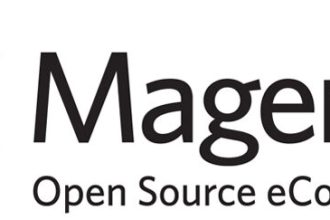We live in a data-driven world where massive volumes of data are generated at every moment. Companies keen to make profits and instill shareholder confidence analyze the data to understand patterns and make decisions based on the insights. Most companies, big and small, are adopting analytics for a competitive edge.
Today, Data Analytics is the yardstick for measuring success. Organizations examine information to discover errors, make predictions and arrive at conclusions. However, data analysis requires expertise in organizing and analyzing the data as it is gathered from multiple sources in various formats.
So if you have a passion for data and count logical reasoning as one of your skill sets, then you can opt for a Data Analyst certification to prepare you for a career in the field of analytics and data science. You can register at an online Bootcamp for a basic understanding of analytics and a working knowledge of the popular analytical tools. These courses are designed to help even the data novice and non-technical workforce master Data Analytics. They equip the learner with a strong foundational knowledge of the tools and techniques required for data processing and analysis.
So what is Data Analytics?
Data Analytics is the process of analyzing raw data to find trends and patterns, answer questions, solve business problems and make predictions. It is both a science and an art. As a science, Data Analytics uses established methods to collect and organize data and extract insights to draw conclusions. It uses a range of tools and data management techniques to perform the analysis, such as data mining, data cleaning, data transformation, data modeling, and more. As an art, Data Analytics adopts an exploratory approach by defining the problem, identifying the data, and using creativity to select the method for obtaining insights.
Data analytics is of four basic types:
- Descriptive analytics: Answers the question of what happened over a given period.
- Diagnostic analytics: Measures historical data against other data to answer the question why something happened and gives an in-depth insight into a particular business problem.
- Predictive analytics: Uses the findings of descriptive and diagnostic analytics to discover clusters and anomalies, and to predict future trends. It is used as a forecasting tool to tell what is likely going to happen.
- Prescriptive analytics: Uses tools and technologies, like machine learning, business rules, and algorithms to suggest a course of action.
Businesses use a mix of analytics types and best practices based on the analytics maturity of the company and the problem at hand.
Components of Data Analytics
The analytical rigor involves several techniques, such as:
Data Mining: This is a structured method of breaking down huge datasets into small chunks of information. It identifies anomalies, correlations, and behavioral patterns in the data.
Text Analytics: It is the analysis of both structured and unstructured data to extract meaningful associations, trends, and patterns from large volumes of different text sources.
Data Visualisation: It involves the presentation of data in a visual format for better insights.
Business Intelligence: This is a technique of transforming data into actionable insights for solving business problems. It uses visual dashboard-style tools for instant understanding of complex data.
Why is Data Analytics Important?
Data Analytics helps businesses optimize their performance and make better decisions by analyzing customer behavior.
In an online data analytics course, students explore topics such as predictive analytics, big data management, analytics and business, and managing customer analytics. Data analysts work in a multi-discipline field that combines technology, statistics and business. They are needed to harness data for intelligent decision making.
Analytics is implemented in almost all industries that generate huge data, whether customer-facing, such as the travel industry or manufacturing. It is also applied in places where high volumes of structured and unstructured data are ingested, such as social media platforms.
Also Read: Data analytics vs. data science
Data Analytics helps companies harness their data and use it for smart business decisions, more efficient operations, higher profits, and satisfied customers. Analytics helps to achieve cost reduction by discovering losses from human errors and identifying operational silos. Customer needs are understood for better products and services and targeted offers.
How does Data Analytics differ from Data Mining?
You may have heard about Data Mining and wondering how it compares vs. Data Analytics.
While Data Analytics leverages technologies, tools, and techniques to perform statistical analysis on datasets, Data Mining is one of the many analytical techniques used for Data analysis. Data Analytics is done on all sizes of data sets and types of data, structured or unstructured. Data Mining is performed only on large datasets of structured data.
The Data Analysis path involves extraction, cleaning, transformation, modeling, and visualization of data. The goal is to extract useful information from the raw data and arrive at conclusions. Data mining is one of the analytics techniques that deal with data exploration. It is a systematic method of computational algorithms used especially for identifying hidden patterns in the dataset.
Data Analytics aims at finding answers to questions or business problems. The goal is to come up with actionable insights and data-driven decisions to test hypotheses. Data mining, on the other hand, generally doesn’t provide answers but makes the data usable to discover patterns and trends, and perhaps design a recommender system.
In Data Analytics, visualization is used to present the analysis and BI models. Statistical techniques are applied to test hypotheses for better business decisions. However, in Data Mining, mathematical and scientific methods are applied, and data visualization is not always used. The ‘mining’ approach discovers unknown relationships in the data, without a specific hypothesis, and builds algorithms to identify a structure within the data,
Skills required for Data Analytics are computer science, statistics, mathematics, domain knowledge, and AI/ML. On the other hand, Data Mining uses skill sets in ML, database management, and statistics.
Summing up, the key difference between the two fields is the end goal. Data Analytics draws insights while Data Mining helps to forecast.
Why Tableau is popular with data analysts
Analytics has become an integral part of the business. Understanding the importance of Tableau in data analytics can make a significant difference in the way you approach your work and improve your productivity. You don’t need to be a technical expert to get started. Whether you want to analyze your sales leads, or visualize how product trends are changing, You can rely on Tableau. To learn it, click on learningtableau.com. Tableau Software has many applications and is widely used as a data analytics software program. Data analytics is one of the most important features of Tableau.
Tableau is an easy-to-use business intelligence software that automates the analytics process and simplifies data visualization. It provides a highly interactive, dynamic, and visual way to analyze data and provides rich analytical capabilities that never get outdated.
Summary
A Data Analytics course does not limit you to a particular industry but can help you to shift and grow with industries that best suit your interests and analytical skills.
Now that we have decoded Data Analytics for you, go ahead and learn the analytical skills and tools for a career in analytics.














